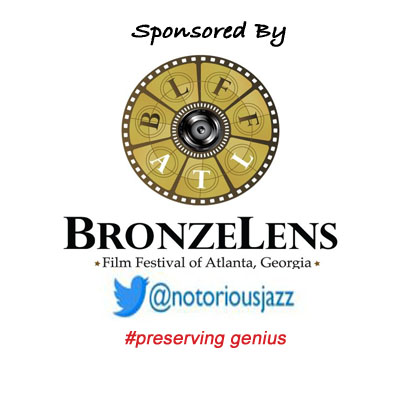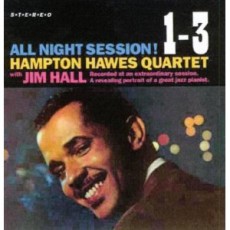
Daily Dose Of Jazz…
Hampton Hawes was born November 13, 1928 in Los Angeles, California and his first experience at the piano was as a toddler sitting on his mother’s lap while she practiced. He was reportedly able to pick out fairly complex tunes by the age of three. Entirely self-taught and influenced by Earl Hines, Bud Powell and Nat King Cole, by his teens Hawes was playing with the leading jazz musicians on the West Coast, including Dexter Gordon, Wardell Gray, Art Pepper, Shorty Rogers and Teddy Edwards. His second professional job, at 19, was playing for eight months with Howard McGhee’s Quintet at the Hi De Ho Club, in a group that included Charlie Parker, who became a great influence on his playing.
After serving in the U.S. army in Japan from 1952–1954, Hampton formed his own trio, with the bassist Red Mitchell and drummer Chuck Thompson. The subsequent three-record “Trio” sessions made by this group in 1955 for Contemporary Records were considered some of the finest records to come out of the West Coast at the time. The following year he added guitarist Jim Hall for the “All Night Sessions” that produced three records made during a non-stop recording session at the Contemporary Studios in Los Angeles.
In 1956, Hawes won the “New Star of the Year” award in Down Beat magazine, “Arrival of the Year” in Metronome magazine and the following year Hawes recorded in New York City with Charles Mingus on the album “Mingus Three”.
Struggled for many years with a heroin addiction and became the target of a federal undercover operation in Los Angeles in 1958. The DEA bargained that Hawes would inform on dealers in L.A. rather than risk a successful career. Coerced into selling a small amount of heroin to an undercover agent, he was arrested on his 30th birthday. Refusing to talk landed him a twice the mandatory minimum, ten-year sentence at Fort Worth Medical Facility, a federal prison hospital. However, after serving three years, in 1963 he was granted Executive Clemency by President Kennedy in 1963, the 42nd of only 43 such pardons given in the final year of Kennedy’s presidency.
After his release from prison, Hampton resumed playing and recording and during a world tour in 1967-68, the pianist was surprised to discover that he had become a legend among jazz listeners in Europe, Asia and the Middle East. During a ten-month period overseas he recorded nine albums, played sold out shows and concert halls in ten countries, and was covered widely in the press, appearing on European television and radio.
As a pianist Hawes’s style is instantly recognizable – for its almost unparalleled swing, unique approach to time and harmony, and its depth of emotional expression, particularly in a blues context. Hawes influenced a great number of other pianists including Andre Previn, Oscar Peterson, Horace Silver, Claude Williamson, Pete Jolly, Toshiko Akiyoshi and others.
Pianist Hampton Hawes died suddenly of a brain hemorrhage on May 22, 1977 at 48 years old. In 2004, the City Council of Los Angeles passed a resolution declaring November 13th “Hampton Hawes Day”.
More Posts: piano

Daily Dose Of Jazz…
Houston Person, born November 10, 1934, grew up in Florence, South Carolina, first playing the piano before switching to tenor sax. He studied at South Carolina State College, went on to join the Air Force, became a member of a service band stationed in West Germany and played with Don Ellis, Eddie Harris, Cedar Walton and Leo Wright.
After his discharge he continued his studies at Hartt College of Music in Hartford, Connecticut. He first became known for a series of albums for Prestige Records in the 1960s, met Etta Jones while both were with Johnny Hammond’s band and spent many years as her musical partner, recording, performing and touring, and for much of his career this association was what he was best known for. Contrary to popular belief, they were never married.
Houston has performed in the hard bop and swing genres but is best known for his soul-jazz work. He has recorded more than seventy-five albums as a leader for Prestige, Westbound, Mercury, Savoy, and Muse Records. He is currently in residence as a leader and record producer at HighNote and has recorded with Charles Brown, Bill Charlap, Charles Earland, Lena Horne, Etta Jones, Lou Rawls, Horace Silver, Dakota Staton, Billy Butler and Richard “Groove” Holmes among others.
He received the Eubie Blake Jazz Award in 1982 and was inducted into the South Carolina State College Hall of Fame in 1999. He continues to produce, record, perform and tour.
More Posts: saxophone
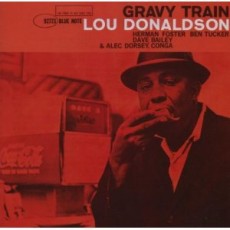
Daily Dose Of Jazz…
Lou Donaldson was born November 1, 1926 in Baden, North Carolina, the second of four children in a musical family, his mother being a concert pianist and the music director at Baden High School. His mother started him out on the clarinet and once mastering the instrument and his pursuit of a music career was ignited.
At age 15, Lou matriculated to North Carolina A & T College, received a Bachelor’s of Science degree, joined the marching band playing clarinet. Drafted into the US Navy in 1945, he played in the Great Lakes Navy Band playing both clarinet and alto saxophone for dances. Hearing Charlie Parker play, he decided that this was the style of playing he would make his own, having previously playing like Johnny Hodges, Tab Smith or Pete Brown.
Upon return from the military he went back North Carolina A& T College, he played in the Billy Tolles dance band and with the Sabby Lewis Band during the summer months in Boston. Sitting in one night with Illinois Jacquet and hearing him play drummer Poppa Joe Jones told Lou to come to New York. Lou went to work at Minton’s Playhouse, was approached by Alfred Lyons of Blue Note Records and recorded with the Milt Jackson Quartet.
Success came and more records as a leader came with Horace Silver, Clifford Brown, Grant Green, John Patton, Blue Mitchell, Donald Byrd, Horace Parlan, Tommy Turrentine, Al Harewood, George Tucker, Jameel Nasser and Curtis Fuller playing as sidemen. Donaldson went on to have a prolific career playing bebop, hard bop jazz blues and soul jazz, helping fellow musicians get work and get paid, bringing Gene Harris and the 3 Sounds from Washington DC to New York to record with him on the famous album called LD Plus 3.
Awarded an honorary doctorate from North Carolina A&T University and n inducted into the International Jazz Hall of Fame along with countless of honors and awards for his outstanding contributions to jazz, alto saxophonist Lou Donaldson continues to express himself as a composer and bandleader.
More Posts: saxophone
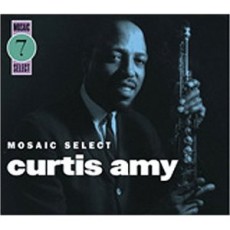
Daily Dose Of Jazz…
Curtis Amy was born on October 11, 1929 in Houston, Texas and learned how to play clarinet before joining the Army. During his time in service he picked up the tenor saxophone and after his discharge he enrolled and graduated from Kentucky State College.
Working as an educator in Tennessee while playing in mid-western jazz clubs for a time and in the mid-1950s, Amy relocated to Los Angeles and signed with Pacific Jazz Records. By the mid-60s he spent three years as musical director for Ray Charles’ orchestra, together with his wife and singer Merry Clayton, and Steve Huffsteter.
Curtis lead his own bands and recording albums under his own name, Amy also did session work and played the solos on several recordings, including The Doors song “Touch Me”, Carole King’s “Tapestry”, and Lou Rawls’ first albums, “Black and Blue and Tobacco Road”; with Dexter Gordon in the Onzy Matthews’ big band as well as working with Marvin Gaye, Tammy Terrell and Smoky Robinson.
Soul jazz and hard bop tenor saxophonist Curtis Amy, a part of the West coast jazz scene who explored other musical mediums, passed away on June 5, 2002.
More Posts: saxophone
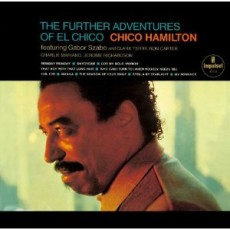
Daily Dose Of Jazz…
Chico Hamilton was born Foreststorn Hamilton on September 20, 1921 in Los Angeles, California and was on a drumming fast track musical education in a band with his schoolmates Charles Mingus, Illinois Jacquet, Ernie Royal, Dexter Gordon, Buddy Collette and Jack Kelso. Subsequent engagements with Lionel Hampton, Slim & Slam, T-Bone Walker, Lester Young, Count Basie, Duke Ellington, Charlie Barnet, Billy Eckstine, Nat King Cole, Sammy Davis Jr., Billie Holiday, Gerry Mulligan and six years with Lena Horne established this young West Coast prodigy as a jazz drummer on the rise, before striking out on his own as a bandleader in 1955.
He recorded his first LP as leader in 1955 on Pacific Jazz with George Duvivier and Howard Roberts and in the same year formed an unusual quintet in L.A. featuring cello, flute, guitar, bass and drums that has been described as one of the last important West Coast jazz bands. The original personnel: Buddy Collette, Jim Hall, Fred Katz and Jim Aton. Hamilton continued to tour using different personnel, from 1957 to 1960, Paul Horn and John Pisano that are featured in the film “Sweet Smell Of Success in 1957 and Jazz On A Summer’s Day with Nate Gershman and Eric Dolphy in 1960. Dolphy was enlisted to record on Hamilton’s first three albums, however by 1961 the group was revamped with Charles Lloyd, Gabor Szabo, George Bohannon and Albert Stinson.
Over the course of his career Chico changed personnel keeping his sound fresh and innovative. Subsequently he recorded for Columbia, Reprise and Impulse, scored for television, commercials and radio. He has worked with countless musicians and vocalists, received the New School Jazz and Contemporary Music Programs Beacons in Jazz Award and was awarded the WLIU-FM Radio Lifetime Achievement Award. He has been given a NEA Jazz Master Fellowship, was confirmed by Congress with the President’s nomination to the Presidents Council on the Arts, received a Living Legend Jazz Award as part of The Kennedy Center Jazz in Our Time Festival, as well as receiving a Doctor of Fine Arts from the New School where he currently teaches. Drummer Chico Hamilton continued to perform and record until his passing on November 25, 2013.
More Posts: drums


